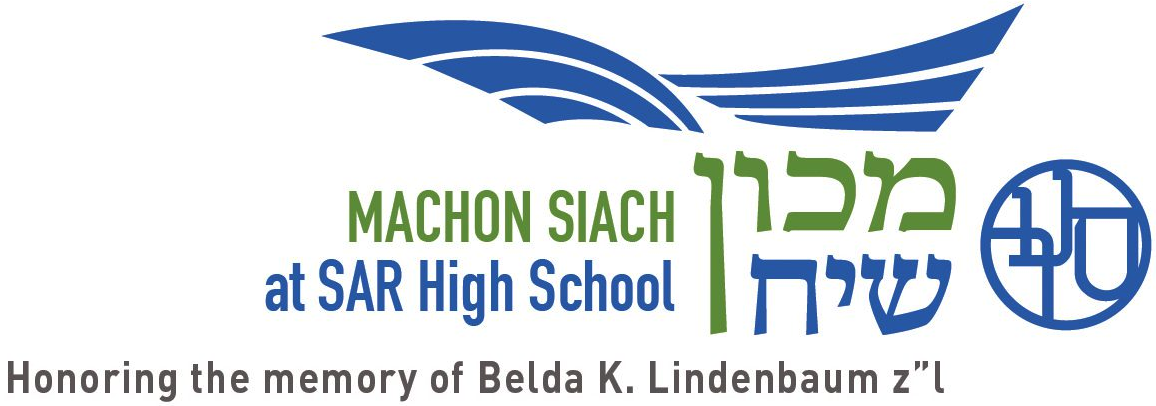
Educating Towards Shul vs. Educating Towards Spirituality
In the current Modern Orthodox high school environment, educators, whether consciously or by force of habit, are educating towards shul by mimicking an adult shul environment in school. We expect our students to show up, take a siddur, know when to stand or sit, know when it is appropriate to talk and when it is not, listen to the rabbi, and volunteer for the community. We socialize our children so they will feel comfortable in a shul environment, so they will know how to “do shul.”
Ensuring that our students are comfortable in shul is a crucial goal. And yet I believe that we need to redirect our attention from educating towards shul to educating towards spirituality. Our educational tefillah space should help students foster a sense of deep connection with God. It should provide students with the opportunity to pause from their routines, appreciate the expansiveness of the world around them, feel gratitude, and allow God to enter their lives.
I am not arguing that chazal originally intended davening to be about personal connection as opposed to chiyyuv. Prooftexts can be marshaled in either direction. Nor should we expect that tefillah be meaningful at every moment. I am arguing that we have an imperative to address our students’ spiritual lives and that our focus on “doing shul” is not providing us with the time or space to develop spiritual capacity.
I am wary of over problematizing or declaring a “davening crisis.” When I look at shacharit on a typical day, many students are fully engaged in tefillah. However, I am most struck by the students who are only sometimes or somewhat engaged. This often takes the form of disengagement until shmoneh esreh, at which point they daven a long and seemingly focused amidah, many of them shuckling away. I also observe students who daven beautifully one day and not at all the next. Such students are looking to connect, and we need to set the proper stage. Given students’ innate desire, I am hopeful about what our students’ spiritual lives might be.
Less is More
What might this refocusing look like in our tefillah spaces, which should continue to look and feel like tefillah? While experiences like art, meditation, or journaling may help a student connect, those experiences should all be in the service of tefillah. There is a distinction, for example, between a meditation with tefillah minyan and a tefillah with meditation minyan. 1Tully gets credit for the distinction The latter, rather than the former, should be our aim. When a student leaves minyan and I ask her if she meditated or if she davened, what will she answer?
That said, our schools can be much more radical than we currently are about omitting parts of tefillah in many of our minyanim in order to allow more time to properly frame the tefillah experience. Very practically, I advocate a bare-bones halakhic davening: birkhot hashachar, baruch she-amar, ashrei, yistabach, and birkhot kriyat shema through shmoneh esreh. On Mondays and Thursdays we should layn. We should do a heicha kedusha on all days. With a bit more time and space, we can frame and discuss tefillot, take a moment to prepare for them, and encourage students to think more about what they are saying and why. If we focus on long-term spiritual development, our students will be better off by having a shorter, more meaningful tefillah than a longer, more comprehensive one.
An Example of Educating Towards Spirituality: Pticha
In our schools, as in our shuls, we simply show up and daven. We don’t articulate what it means to transition from home to school, to start our day, to set aside the anxiety of the upcoming biology test. Adults who voluntarily show up for tefillah need this liminal time as well, but students who show up because a room number is on their schedule, and are about to show up in ten other rooms throughout the course of the day, especially need distinct delineation of the tefillah time. Our focus need not be on biur tefillah since helping students understand the translation of pesukei de-zimrah isn’t necessarily going to help them connect to the idea of being in a space with God. Instead, we can create experiences that help students appreciate being in that space so that they can carry the experience with them and draw strength from it.
Therefore, I propose spending the first ten minutes of the time allotted for shacharit each morning engaged in a pticha, an opening activity that sets the tone for tefillah. Such preparation for entering the tefillah space is, in fact, an ancient idea advocated by chazal (Mishna Brachot 5,1)
חֲסִידִים הָרִאשׁוֹנִים הָיוּ שׁוֹהִים שָׁעָה אַחַת וּמִתְפַּלְּלִים, כְּדֵי שֶׁיְּכַוְּנוּ אֶת לִבָּם לַמָּקוֹם.
The early generations of pious men would wait one hour, in order to reach the solemn frame of mind appropriate for prayer, and then pray, so that they would focus their hearts toward their Father in Heaven.
The time has come to give this idea new life within our educational settings.
So what might happen from 8:00-8:10 on a Monday morning? Shacharit can begin with a niggun or with journaling. It can begin with small group check-ins or daily routines in which each student shares something he or she brings to the experience that morning. What are you davening for today? What do you want to leave behind as you start tefillah? Name a character trait you are cultivating; which part of tefillah speaks to that? However we structure the pticha, the goal is to cordon off tefillah as distinct, as an experience one should enter. The pticha should communicate to students that we are not just here to mimic ritual; we are here to be mitpallelim, to do our best to be fully present before Hashem.
- 1Tully gets credit for the distinction


